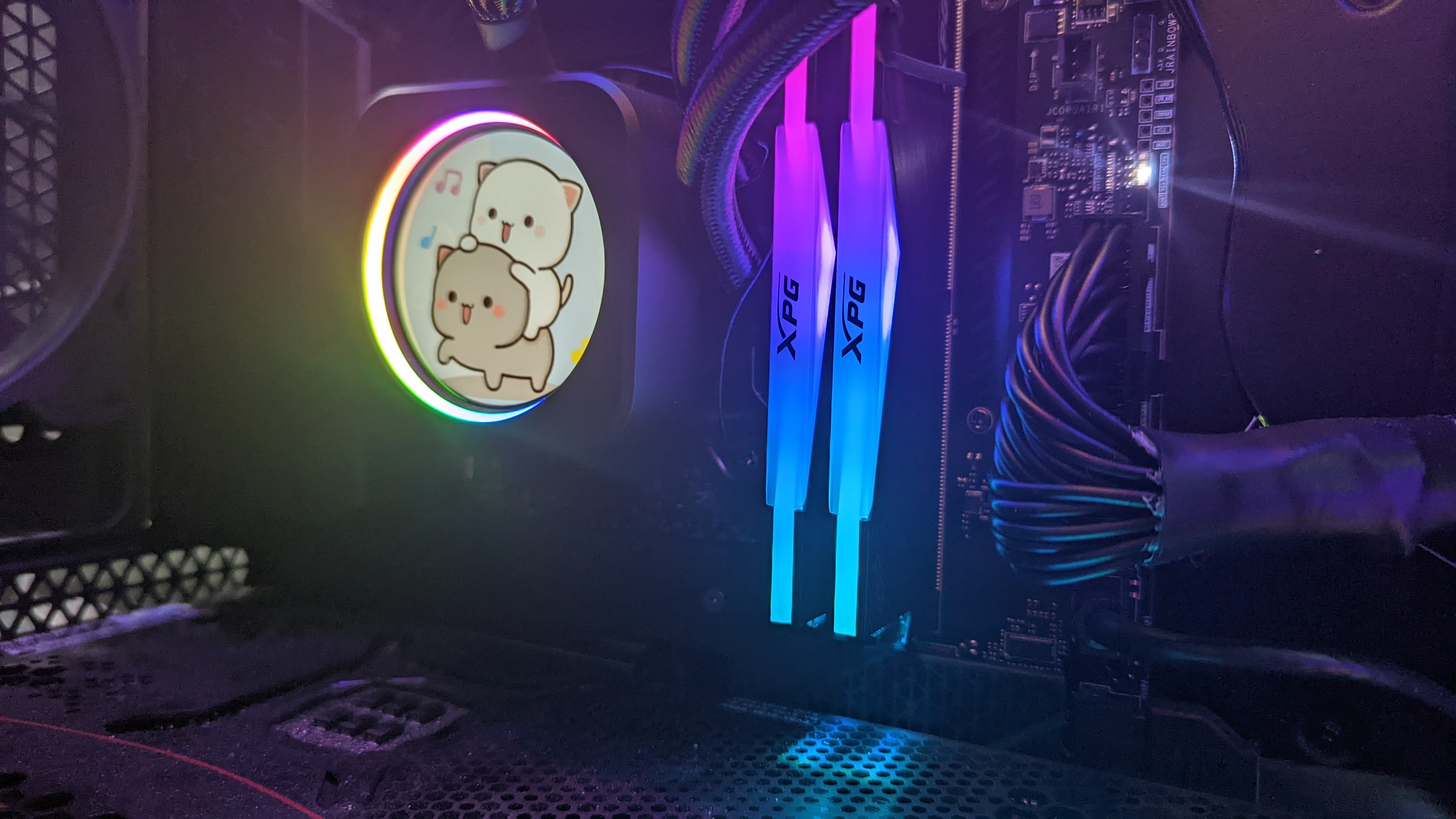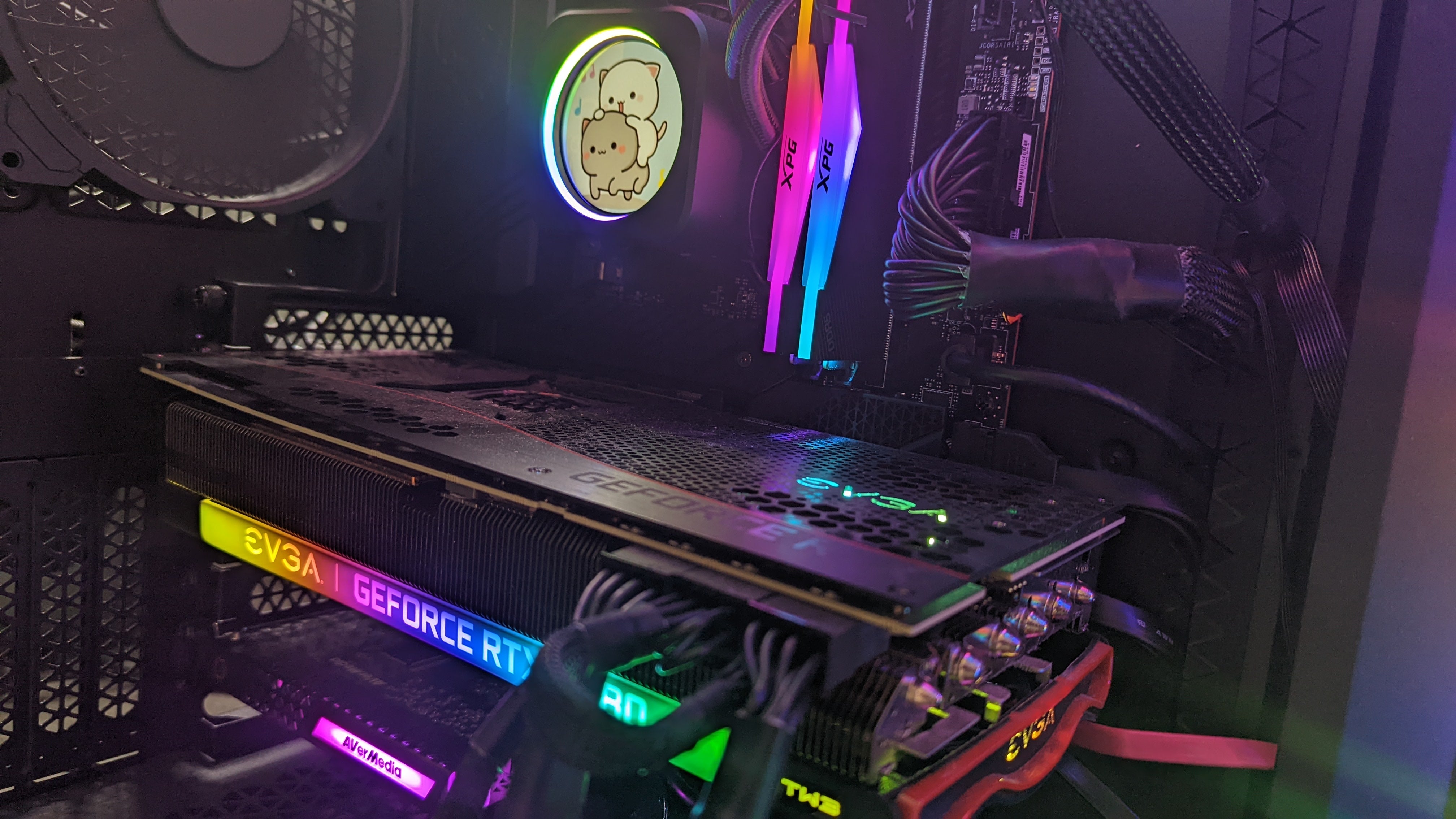Other outlets have covered these differences expertly, but we wanted to add our take on the memory dilemma with our particular focus on CPU-intensive and memory-intensive sections of modern games. Our somewhat later coverage also allows us to evaluate memory value from slightly further ahead in the timeline, as the initial spike for DDR5 demand seems to have tailed off and prices are beginning to shift. After all, while DDR4 is clearly the cheaper option in the here and now, most PC builders are keeping their motherboards and processors for upwards of five years - so it’s worth considering whether DDR5 is a future-proof investment or an unnecessary cost sink over that kind of a timeframe. To test our memory, we’ve used a slightly different setup than featured in our Intel 12th-gen processor reviews. We’ve swapped our Asus Z690 motherboard to a memory OC focused option from MSI, the MEG Z690 Unify-X, equipped with just two DIMM slots to maximise the performance of a single dual-channel kit. We’ve also been provided with XPG’s Lancer 2x 8GB 6000MT/s CL40 memory, which is among the fastest you can currently buy and a significant step beyond the 4800MT/s and 5200MT/s memory we had access to in our prior 12th-gen coverage. For our DDR4 rig, we’re using an Asus Tuf Gaming Z690-Plus WiFi D4 with 2x 8GB Corsair Vengeance RGB Pro 4000MT/s CL19 memory. Elsewhere, we’re using the best equipment we had access to at the time of testing: an Intel 12900K processor, an Asus ROG Strix RTX 3090 OC graphics card, a 1TB PNY XLR8 CS3140 PCIe 4.0 SSD and a 1000W Corsair RM1000x power supply. The CPU is running with turbo limits disabled and kept cool by the incredible Asus ROG Ryujin 2 360mm AiO. This should allow us to tease out the biggest possible differences in memory types, although we expect to see similar trends even on more modest systems, as long as you’re in similarly CPU-limited situations. In terms of testing, we’ll be looking at our usual CPU test suite, including modern titles with RT, purely rasterised games and a handful of content creation tasks. If there’s another workload that you’d like to see analysed, do mention it in the comments or hit me up on Twitter - @wsjudd. As well as testing our kits in their default configurations, we’ll also test some moderate overclocks and lower frequencies in order to get an idea of how performance scales as you spend more on your DDR4 or DDR5 RAM. That just about does it for the intro, so let’s get right into the testing - starting with some synthetic benchmarks to get an idea of the maximum possible difference we could see as memory speed and type changes. Then we’ll move swiftly into our content creation tasks, based on our real workflow, and then the bulk of the testing will be in-game. DDR5 vs DDR4: Which Z690 motherboard makes sense?
Introduction, hardware breakdown, test system [This Page] Content creation benchmarks: Cinebench, Handbrake, AIDA64 Gaming benchmarks: Ashes, CS:GO, Far Cry 6, Crysis 3 Remastered DDR5 vs DDR4 on Z690: the Digital Foundry verdict

